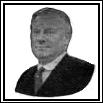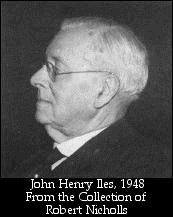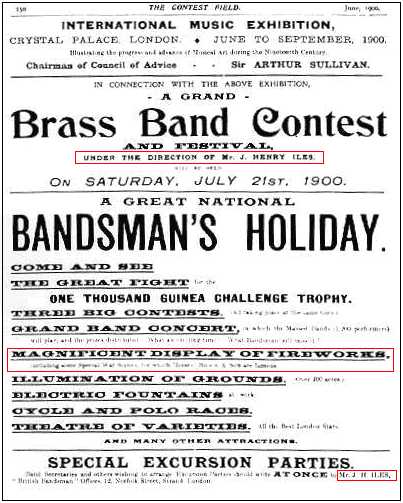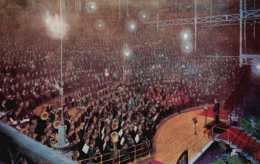 If John Jennison was the inspiration behind the founding of Belle Vue and its visionary developer between 1836 and 1869, it was his son George who carried the tradition into the new century. But it was John Henry Iles who took up the baton on the 1920s and introduced many aspects of the park that became its trademarks. Iles was an amusement park man who had travelled the world learning the business and constructing and operating parks in Britain, Europe and as far afield as South America. He had visited Riverview Park in Chicago, where he saw the Bobs Coaster, and Coney Island, New York, where he acquired the European rights to build and sell scenic railways from the legendary La Marcus. A. Thompson Scenic Railway Company. Prior to taking over as director of Belle Vue his amusement park empire included parks and concessions at Aberdeen, Blackpool, Great Yarmouth, London, Manchester, Berlin, Brussels, Cairo, Paris and Petrograd. In 1919 he designed his own permanent amusement park, the Margate Dreamland. In 1924 he took responsibility for the amusement park at the Wembly Exhibition and it was there that he built the scenic railway he later relocated to Belle Vue.  Among Iles business interests was The Patent Caterpillar Company, which he owned. It is likely that once again this was a case of purchasing the European rights to patents taken out in the U.S.A. The Caterpillar at Belle Vue was constructed by the Traver Engineering Company of Beaver Falls, Pensylvannia and the caterpillar was one of the rides that Traver constructed in parks across the U.S.A. In fact it was Traver who built the Fred Church designed roller coaster, The Bobs, 1n 1929. During Iles' time at Belle Vue the amusement park was constructed near the Hyde Road entrance and included the Scenic Railway, the Bobs, the Caterpillar, the Bug, the Seaplane Delux, the Ghost Train, the Whip, and the Dodgems. The miniture railway was installed in the main avenue. Dirt track motorcycle racing was introduced, first at the greyhound track and later in the purpose built stadium that became the home of the Belle Vue Aces. The circus came in 1929/30. Iles had a personal interest in brass band music and even before coming to Belle Vue he had business interests in that field too. He had first run into Brass Band Contests while visiting Manchester in 1898. On that occasion he had attended the September contest. When he returned to London he purchased the "British Bandsman" magazine and R. Smith and Co., publishers of band music. In 1900 John Henry Iles obtained the co-operation of the Crystal Palace Company to present and organise the National Brass Band Championships of Great Britain, together with the complementary Festival Concert. There was an agreement to use a trophy that the Crystal Palace Company had commisioned and later mothballed for 27 years, the Challenge Trophy. It would be presented to the overall winning band. This magnificent Trophy was replaced after WWII by the somewhat more modest, yet still excellent Champion Band of Great Britain Trophy which has been awarded annually since the National Championship Finals were restarted in 1945.  With Iles' passion for the brass band world it was natural that he brought the National Brass Band Contests to Belle Vue when he took control of the park. Iles wasn't just a backroom figure in tghe brass band world though, each year until his death in 1951, he conducted the massed band concert which followed the competition. Below you can see Iles conducting the massed bands at a contest in the Crystal Palace. That picture along with the photographs of the trophy and of the poster were donated by Gavin Holman the webmaster of The Internet Bandsman's Everything Within.   The Iles family influence in the park went beyond John Henry though. One of his early appointments was to put his brother William in charge of the zoo, the catering business and the Brass Band Contests. In 1933, William passed control of the zoo to his son Gerald. John Henry Iles was a man with many irons in many fires and in the end it was his downfall. In the 1930s he ventured into the film industry and lost a personal fortune reported to be in the region of a quarter of a million pounds. In 1937 he quietly resigned as chairman and managing director and his personal bancruptcy followed not long after. Gavin Holman, the ringmaster of the Brass Band Webring and the webmaster of The Internet Bandsman's Everything Within, was a big help with information on John Henry Iles and his interests in the Brass Band movement. All the material on this web site is © David Boardman, unless otherwise stated, and may not be copied, downloaded or otherwise reproduced or retransmitted without the written permission of the webmaster. Any contravention of the copyright of others is unintentional and will be corrected immediately when brought to the attention of the webmaster. |